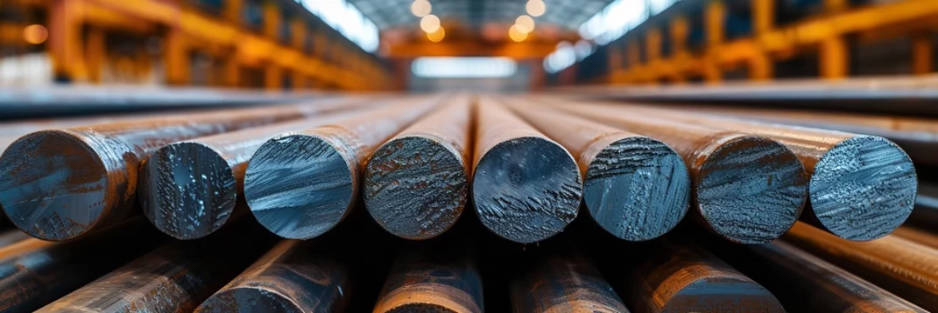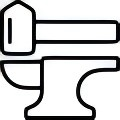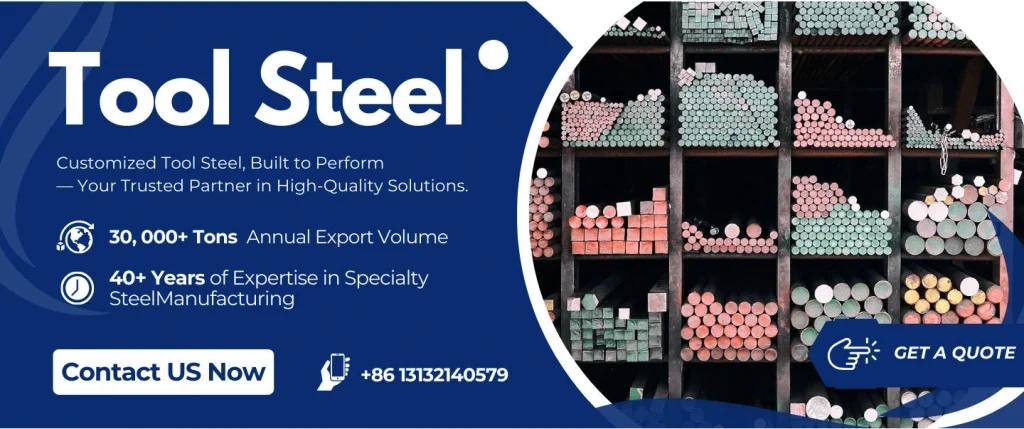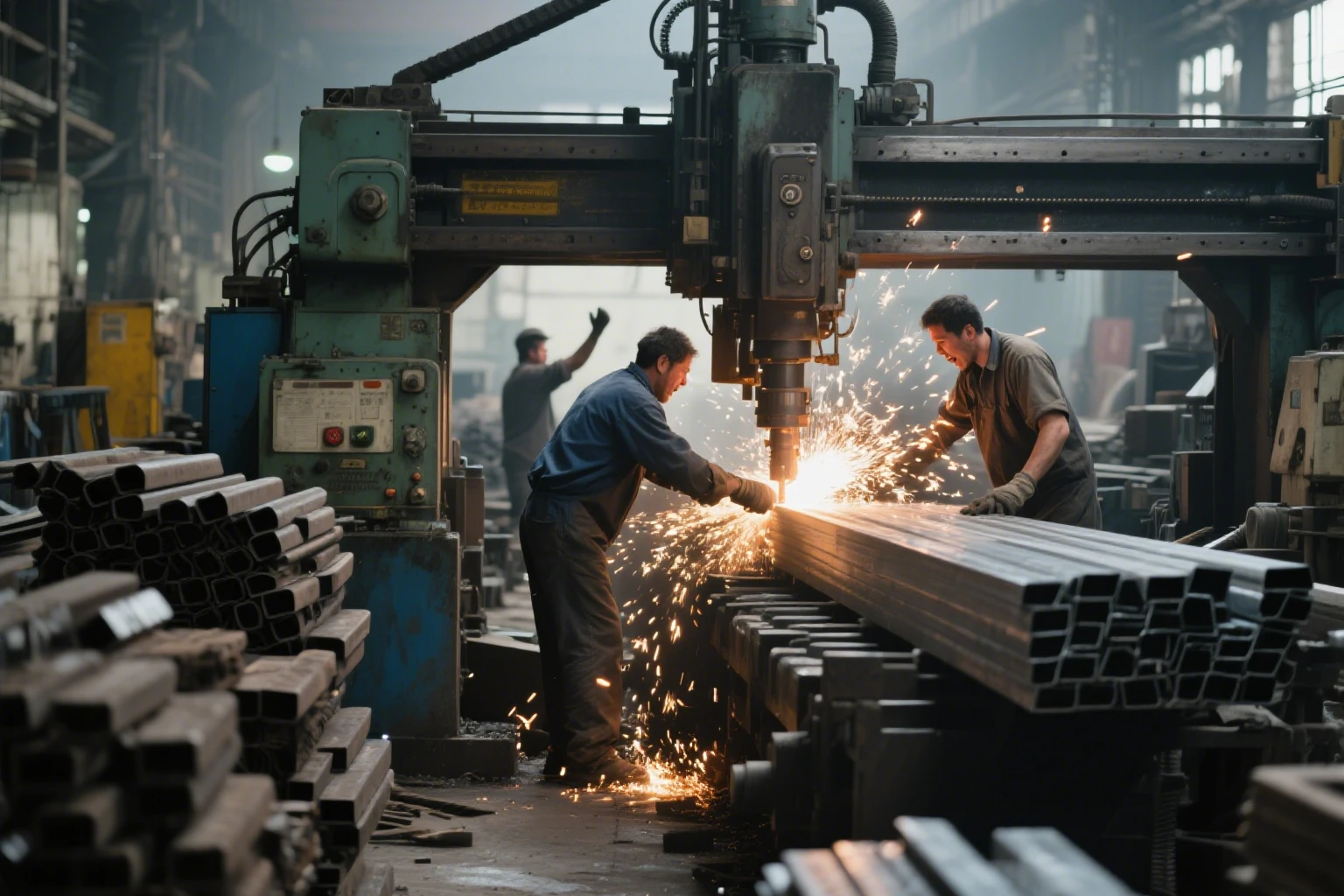What’s the Deal with Material Composition and Alloy Design?
What Goes into Tool Steel
Tool steel is a specialized high-performance steel developed specifically for manufacturing tools and dies. It’s loaded with carbon and other bits of alloy to achieve its strength, toughness, and resistance to wear to a higher degree. What they put into it actually determines how hard is tool steel . Carbon tool steel, for instance, is a behemoth—very hard and strong because of all the carbon. That is why it’s best for items such as cutting tools, measuring instruments, and precision tools in such sectors as car repair shops and construction sites.
Alloy tool steel is enhanced with elements such as chromium (Cr), molybdenum (Mo), tungsten (W), and vanadium (V), offering superior hardness, heat resistance, and wear performance. These make the steel harden like a pro, stay tough, resist wear, and handle crazy heat. You’ll see it in high-end gear like cutting blades, molds, and tools that get hammered hard.
What’s in Stainless Steel
Stainless steel is different because it’s all about fighting rust. It pulls this off with at least 10.5% chromium. You can also throw in things like nickel (Ni), molybdenum (Mo), or nitrogen to bump up its toughness or strength. It’s not as naturally tough as tool steel, but some versions can get beefed up with heat treatment.
How Ingredients Affect Toughness
The toughness of tool steel and stainless steel depends on what they’re made of. For tool steels, more carbon means more carbides, which make them insanely hard. Toss in some alloying elements, and you get a tighter structure during heat treatment, so it lasts forever.
Stainless steels, though, rely on work-hardening or changing their structure during heat treatment to get tougher. Like, martensitic stainless steels are made to toughen up with heat while still keeping rust at bay.
How Does Heat Treatment Change Things?
Heat Treatment and Tool Steel Toughness
Hot work is a game-changer for making tool steel tough. It’s all about carefully heating and cooling the steel in steps like annealing, quenching, and tempering. These are super important for getting the right vibe. Quenching makes it crazy hard by cooling it fast to form martensite, this rock-solid structure. Then tempering chills out the brittleness by warming it back up a bit.
High-speed tool steels (HSS), for example, stay tough even when things heat up, thanks to their “red hardness.” That’s why HSS tools can zip along way faster than plain carbon steel ones.
Heat Treatment for Stainless Steel
Stainless steels get different heat treatments depending on what kind they are. Austenitic ones are solution-annealed to break up carbides and smooth out their structure. Martensitic ones need quenching and tempering to nail both toughness and strength.
Precipitation-hardening stainless steels use aging treatments, where tiny bits form inside to make them stronger without losing their rust-proof powers. That’s why they’re great for aerospace parts dealing with gnarly conditions.
How Toughening Works Differently
Tool steels get tough mainly from carbon and carbides forming during heat treatment. Adding stuff like vanadium keeps those carbides solid even when it’s super hot.
Stainless steels, on the flip side, lean on structure changes or tiny particles forming during heat treatment. Martensitic types turn into martensite when quenched, which makes them tougher. Precipitation-hardening ones build strength from little particles popping up in an austenitic or martensitic base.
What Makes Them Different?
Different Kinds of Tool Steel
Tool steels come in all sorts of types depending on what they’re for:
- Cold-work tool steels: Built for shaping metals at room temp. They’re champs at resisting wear.
- Hot-work tool steels: Made for high-heat gigs. They don’t crack under thermal stress.
- High-speed tool steels: Stay sharp even when hot, thanks to red hardness.
- Shock-resistant tool steels: Tough enough to take a beating. They’re not as brittle as others.
Alloy tool steels are super popular for making molds for plastic molding or die-casting since they hold up so well. You’ll also find them in car engine parts like camshafts, where strength and staying power are key.
Stainless Steel Varieties
Stainless steels are split up by their inner structure:
- Austenitic stainless steels: Don’t stick to magnets and are awesome at dodging rust. Think pots and pans.
- Ferritic stainless steels: Magnetic and pretty good against rust. Often used in car exhausts.
- Martensitic stainless steels: Can get toughened up with heat treatment. Great for knives.
- Duplex stainless steels: Mix austenitic and ferritic vibes. Super strong and rust-resistant.
- Precipitation-hardening stainless steels: Balance strength and rust resistance with aging treatments.
Both materials have their own superpowers based on what’s in them and how they’re processed. How tough tool steel is compared to stainless steel depends on those details, making each one perfect for certain jobs.
Applications and Performance Trade-Offs Between Tool Steel and Stainless Steel
Tool Steel’s Go-To Uses
Tool steel is essential for producing components that require extreme hardness and dimensional stability, such as automotive cutting dies, injection molds, industrial blades, and precision instruments. Carbon tool steel, for example, is a must for whipping up cutting tools, measuring gadgets, and precision gear for industries like cars, construction, and factories. Its high carbon content makes it super durable and precise.
Alloy tool steel steps it up by adding stuff like chromium (Cr), molybdenum (Mo), tungsten (W), and vanadium (V). These make it harden better, stay tough, resist wear, and handle heat like nobody’s business. That’s why it’s in high-performance tools like drills, saw blades, molds for plastic molding or die-casting, and heavy-duty hammers.
Where Stainless Steel Shines
Stainless steel is all about resisting rust, thanks to at least 10.5% chromium. You can add extras like nickel (Ni) or molybdenum (Mo) to boost its toughness or strength.
Austenitic stainless steels are a favorite for kitchenware because they’re so rust-resistant. Martensitic ones are awesome for cutlery since they can get toughened up while still fighting off some rust. Duplex stainless steels mix strength and rust resistance, so they’re great for marine or chemical processing jobs.
Balancing Toughness, Rust Resistance, and Durability
The trade-offs between toughness, rust resistance, and durability depend on what’s in the mix. Tool steels are all about toughness and wear resistance, not so much rust protection. Their high carbon content helps make carbides during heat treatment, which pumps up their strength.
Stainless steels focus on keeping rust away but can still get pretty tough with heat treatment or work-hardening. Martensitic types find a sweet spot, giving you decent toughness with some rust protection.
How Do You Test Toughness?
The Basics of Toughness Testing
Toughness testing checks how well a material holds up when you push on it. You’ve got tests like the Brinell Hardness Test (BHN), Rockwell Hardness Test (HR), Vickers Hardness Test (HV), and Mohs Scale of Hardness.
Each test has its own style and works best for certain stuff:
- Brinell Hardness Test: Awesome for softer metals. Uses a steel or tungsten carbide ball.
- Rockwell Hardness Test: Checks how deep a penetrator digs in, with different scales for different materials.
- Vickers Hardness Test: Uses a diamond indenter. Perfect for thin stuff or coatings.
- Mohs Scale: A quick test to see how scratch-resistant minerals are.
Is Tool Steel Tougher Than Stainless Steel?
When you pit tool steel against stainless steel in tests like Rockwell or Vickers, tool steel usually comes out tougher because of how it’s made. High-speed tool steels (HSS) stay tough even when things get hot, thanks to their “red hardness.” That makes them killer for cutting jobs that need serious staying power.
Martensitic stainless steels can get close with the right heat treatments, but they usually don’t hit the insane toughness of some tool steel types. How tough tool steel is compared to stainless steel depends on the specific kinds you’re testing.
Promispecial® Tool Steel: Solid and Ready to Roll
Tool Steel for Every Job
Promispecial® offers a comprehensive range of precision-engineered tool steels designed for applications in automotive manufacturing, aerospace tooling, die casting, and plastic injection molding. We have got carbon tool steels that are awesome for wear resistance and alloy tool steels juiced up with stuff like chromium and vanadium for extra toughness.
These steels are crafted with care, using processes like forging or rolling to tighten up their structure, then heat-treated with steps like annealing or quenching. That makes Promispecial® tool steels super reliable for everything from precision cutting tools to heavy-duty gear that takes a pounding.
Stock and Delivery You Can Trust
Promispecial® isn’t just about making great steel—we have got the supply side locked down too. Our inventory setup service means you can grab the tool steel grades you need without waiting forever. With spot-on delivery schedules and a tight logistics network, Promispecial® keeps industries like car manufacturing and aerospace humming with solutions that fit just right. Ready to streamline your tool steel supply? Contact us today to explore how Promispecial® can keep your operations running smoothly.
FAQ
Q: What gives tool steel its superior hardness compared to stainless steel?
A: Tool steels typically contain higher carbon content and specialized alloying elements such as vanadium and molybdenum, which contribute to the formation of hard carbides during heat treatment, ensuring excellent hardness and wear resistance.
Q: Can stainless steel ever be as hard as tool steel?
A: Sometimes! Martensitic stainless steels can get pretty tough with the right heat treatment, like quenching and tempering. But they usually don’t hit the extreme hardness of high-speed tool steels (HSS), which are built for crazy durability, especially at high temps.


























